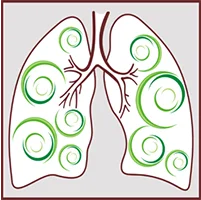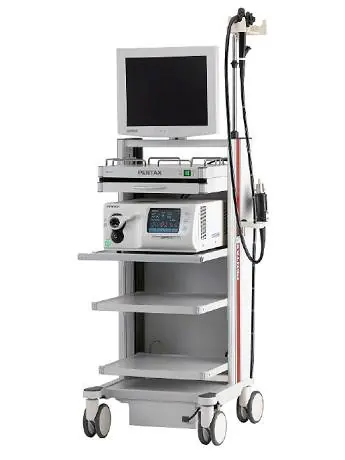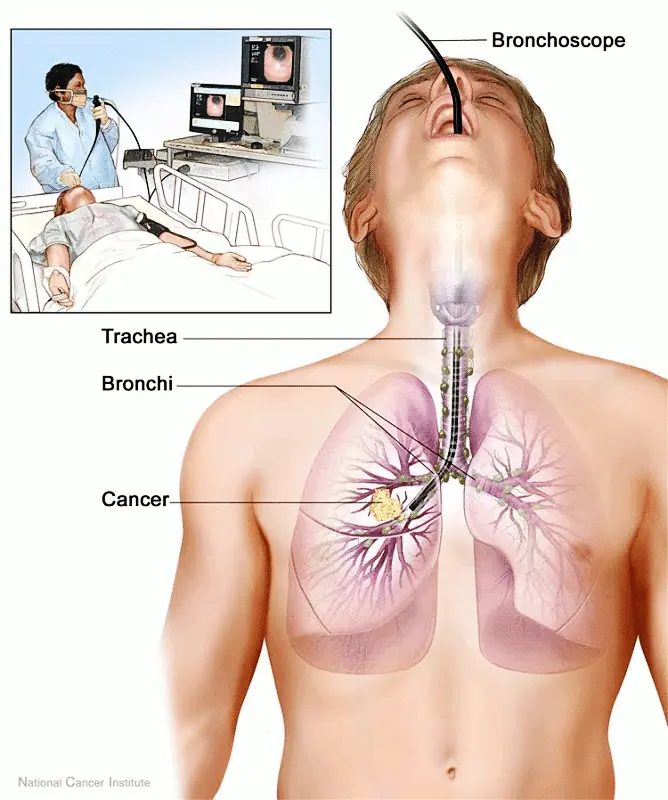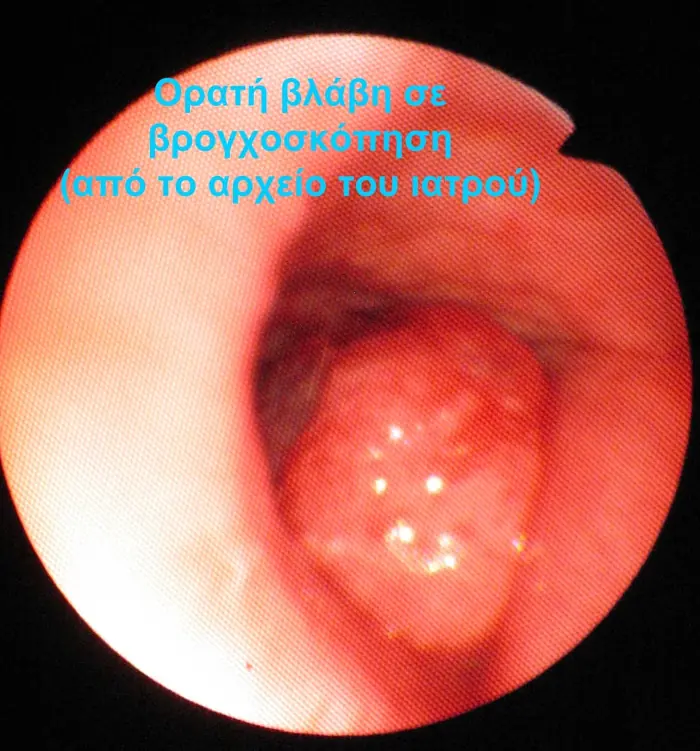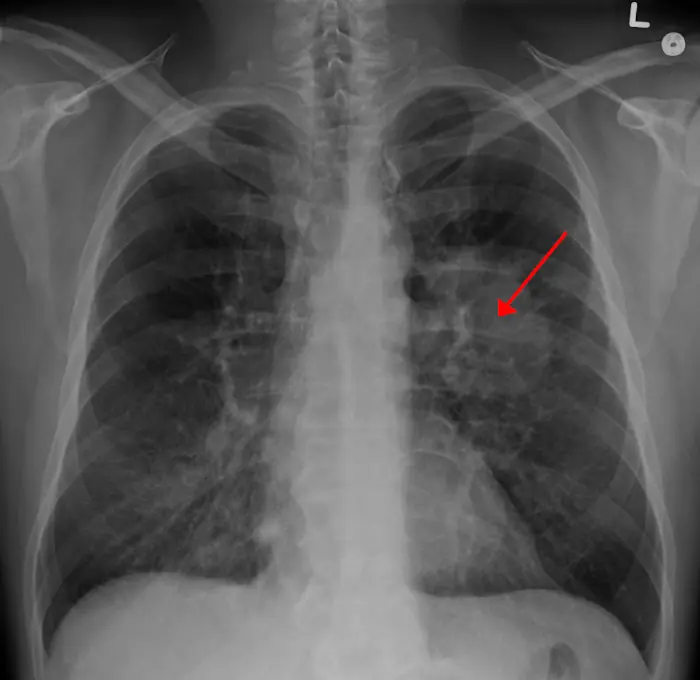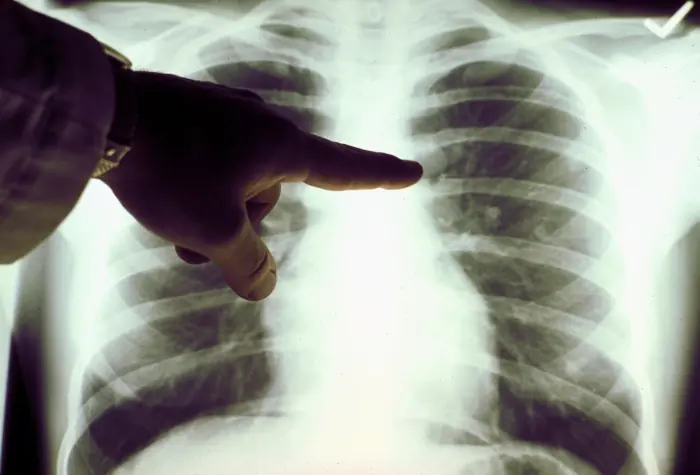Lung cancer is the most common cause of cancer death as it causes more deaths than breast, bowel and prostate cancer combined.
Lung cancer is a serious form of cancer that starts in the lung cells. There are several types and subtypes of lung cancer, but the main distinction is between small cell lung carcinoma (SCLC) and non-small cell lung carcinoma (NSCLC).
What is cancer?
Our bodies are made up of trillions of living cells. Normal cells grow, divide into new cells and many of them die in a programmed way. In the first few years of our lives, cells divide at a rapid rate and this is how our body grows. When we become adults most of our cells divide only to replace those that are destroyed or die.
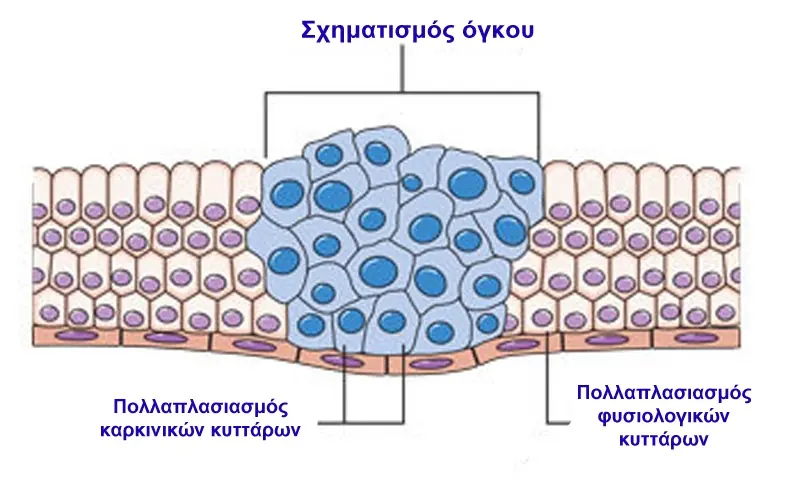
Cancer, on the other hand, starts when cells in some part of our body start to grow uncontrollably (image).The growth of cancer cells is different from that of normal cells.
Cancer cells are harder to die and usually grow non-stop, creating new cancer cells that do not maintain their normal function and replace normal tissues. These cells can enter other tissues (infiltrate) and destroy them.
The abilities of cancer cells
These abilities, namely uncontrolled growth and tissue infiltration, are characteristic of cancer cells. Once cancer cells pass into the blood or lymphatic vessels, they can travel to other parts of the body.
There they can and do grow and form new tumors that replace and destroy normal tissues. This process is called metastasis.
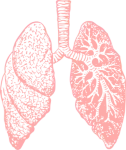
Πώς χαρακτηρίζεται και θεραπεύται ο καρκίνος;
Ο καρκίνος χαρακτηρίζεται (και θεραπεύεται) ανάλογα με το όργανο από το οποίο προέρχεται και όχι από το όργανο στο οποίο μεθίσταται.
Για παράδειγμα ο καρκίνος του πνεύμονα που έχει μετάσταση στο ήπαρ εξακολουθεί να είναι καρκίνος του πνεύμονα και όχι του ήπατος.
Κάθε τύπος καρκίνου έχει διαφορετική συμπεριφορά (δηλαδή ρυθμό ανάπτυξης, ικανότητα να κάνει μεταστάσεις, ανταπόκριση στη θεραπεία) και για τον λόγο αυτό η θεραπεία πάντα εξατομικεύεται.
Ο καρκίνος του πνεύμονα προέρχεται από τους πνευμονικούς ιστούς, δηλαδή το πνευμονικό παρέγχυμα, τους βρόγχους ή τον υπεζωκότα (τον υμένα που καλύπτει τους πνεύμονες μέσα στον θώρακα). Συνηθέστερος είναι ο βρογχογενής καρκίνος.
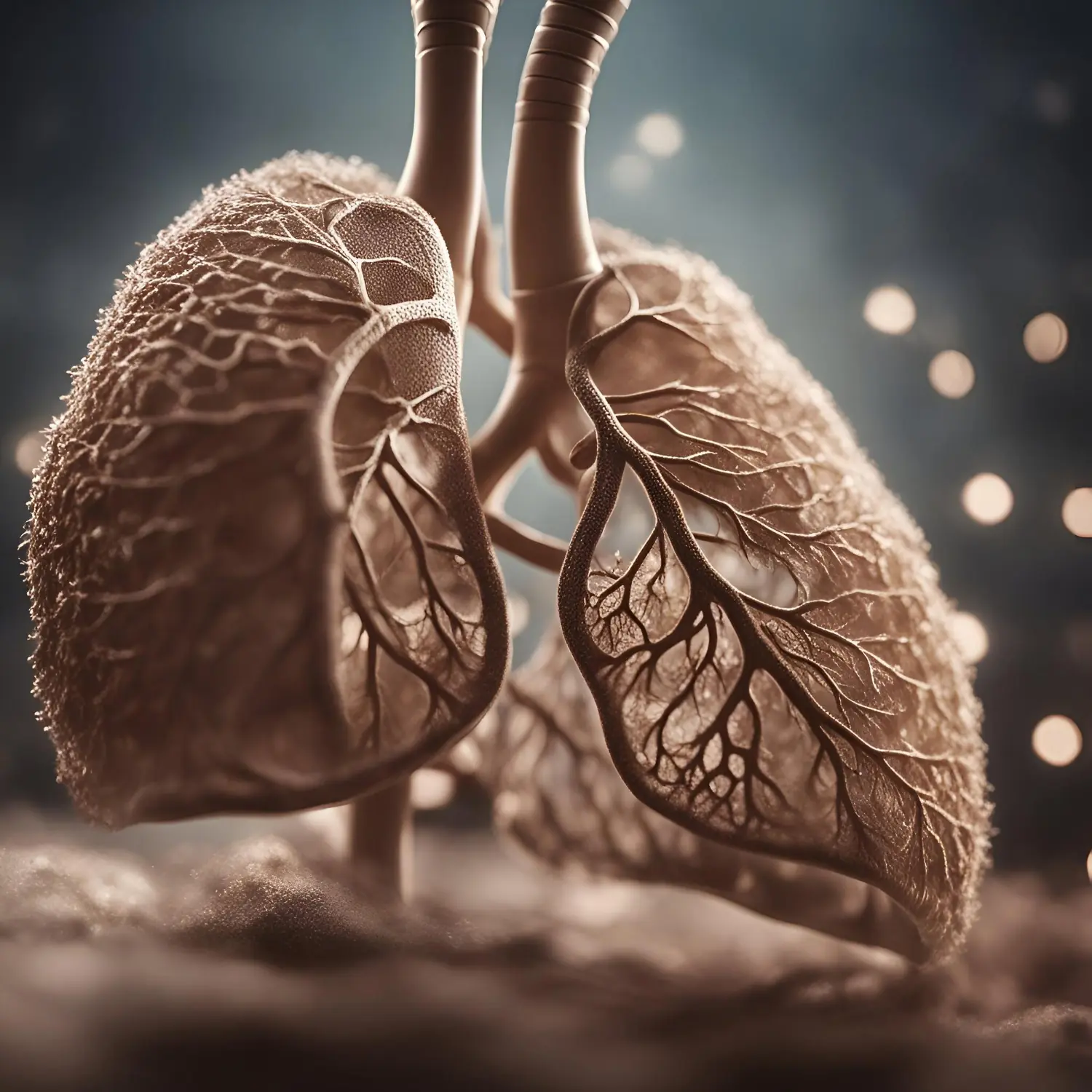
Benign tumours are not cancers. The cells that make them can and do grow faster than normal but do not metastasize and do not infiltrate neighbouring tissues, so they press on them without destroying them. For this reason they are rarely life-threatening.
What causes lung cancer?
The main causes of lung cancer are:
1. Smoking ( active or passive smoking)
2. Exposure to radon or asbestos
3. Hereditary factors
4. Environmental pollution
Smoking is the leading cause of lung cancer as its smoke contains at least 4000 harmful substances (figure ).
In particular, 85-90% of people with lung cancer are current or former smokers. Also, 30% of heavy smokers are at risk of developing lung cancer compared to just 1% of non-smokers.
The risk of cancer increases linearly (proportional) with the amount of cigarettes a person smokes and exponentially (multiple) with years of smoking.
That is, a smoker who smokes 1 pack a day for 30 years is at greater risk than someone who smokes 3 packs a day for 10 years, even though in both cases the total number of cigarettes is the same.
The other factors cause a very small proportion of cancers compared to the proportion caused by smoking.
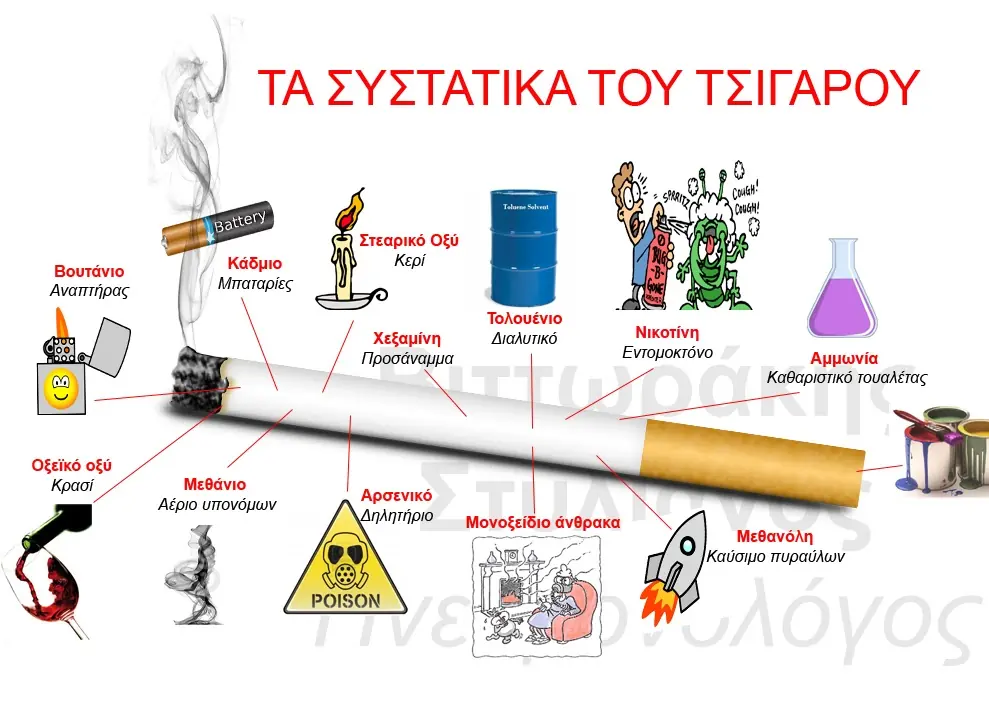
What are the symptoms of lung cancer?
The symptoms of cancer vary depending on the patient and the location of the cancer in the lung. The cancer may be asymptomatic for a long time, or it may cause symptoms attributed to smoking or other diseases, so that it is diagnosed at an advanced stage.
- A cough that first appears, changes in intensity or does not improve with treatment.
- Blood in the sputum
- Dyspnoea
- Pain in the Chest
- Voice gill
- Frequent infections-bronchitis that recurs
- Feeling of constant fatigue
- Unexplained weight loss
How is lung cancer diagnosed?
If a smoker presents with a suspicious symptom, a pulmonologist may order some of the tests described below.
The simple chest X-ray:
Although its accuracy is limited, it is an inexpensive test that is easy to perform, contains a low dose of radiation and can sometimes reveal "signs" indicative of possible cancer (e.g. a nodule on the image). In this case a CT scan follows.
CT lung scan
CT lung scans are done because they give us detailed images of the lung in cross-sections that can be reconstructed in modern medical machines into stunning 3D images. The disadvantage is that it is an expensive test with a significant dose of radiation.
In recent years, however, low-dose computed tomography (LDCT) has been used in some countries as part of screening for lung cancer, for early diagnosis in smokers.
It is the most detailed and accurate way to detect a lung lesion and assess whether it is malignancy or another benign lesion. But for an accurate diagnosis, a biopsy is needed, which is done by bronchoscopy.
Bronchoscopy:
Bronchoscopy is the examination that can establish the definitive diagnosis, which is done through the histological examination (biopsy) of the pathological tissue.
Bronchoscopy is performed only by a specialized pulmonologist using a bronchoscope. It is completely painless as mild sedation (anesthesia) is administered to the patient by an anesthesiologist. The bronchoscope (a flexible tube with a camera at its tip) is inserted through the nose into the trachea and from there into the entire bronchial tree (image).
If a lesion is visible, a biopsy for histological examination can be taken with a special biopsy forceps. Additionally, cytological examination with a special brush (brushing) is also performed.
Sometimes, a lymph node biopsy located behind the trachea can also be taken with a special needle (Transbronchial Needle Biopsy-TBNB).
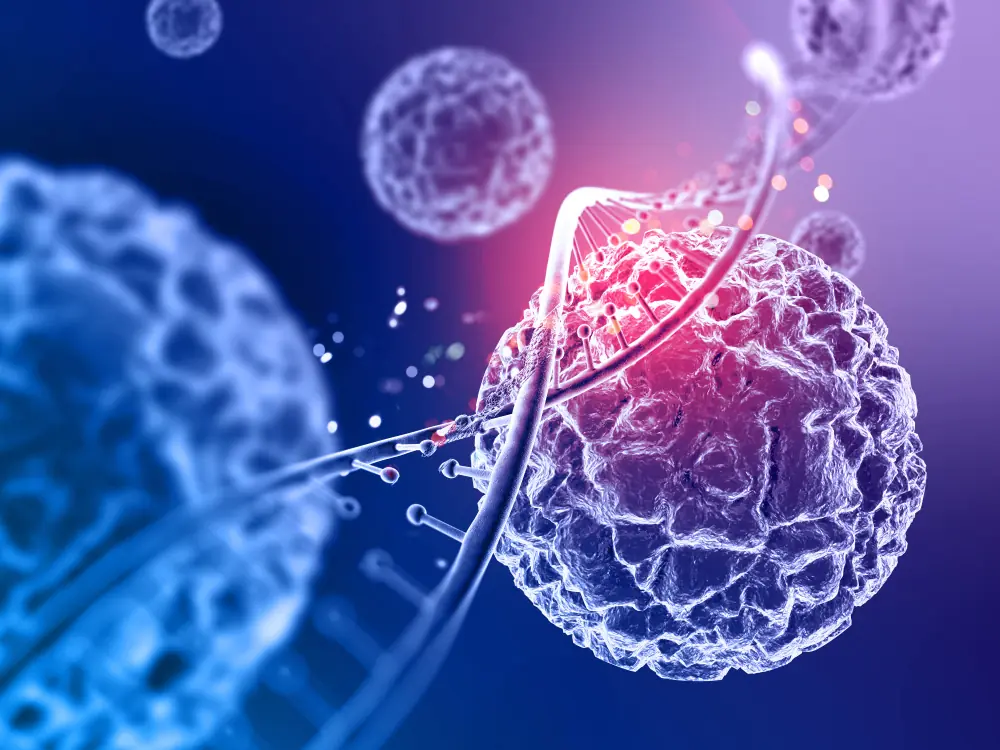
Dr. Stylianos Vyttorakis & Collaborations
In our city, we have at our disposal in a private clinic the most modern video bronchoscope with high-resolution image and special real-time image enhancement techniques.
In cases where a lesion is in the periphery of the lung, the bronchoscope may not be able to approach it due to its necessary thickness.
In this case, a transdermal biopsy is necessary. The existence of this technology maximizes the diagnostic capability of bronchoscopy and is a very important aid for the pulmonologist-bronchoscopist in detecting even very small abnormalities.
Transdermal - Transthoracic Biopsy:
Transdermal - Transthoracic Biopsy is a minimally invasive procedure used to obtain tissue samples from the lungs or other structures within the chest cavity. It involves inserting a biopsy needle through the skin and into the target area, guided by imaging techniques such as CT scan or ultrasound. This procedure is typically performed under local anesthesia or sedation, and it allows for the sampling of lung nodules, masses, or other abnormalities that may not be accessible with bronchoscopy. The tissue samples obtained are then sent to the laboratory for histological examination to determine the presence of any abnormalities or diseases.
Cytological Examination:
Finally, it should be noted that if the patient has productive cough, sputum samples can also be sent for cytological examination. Cytological examinations are an important tool for the prevention and diagnosis of cancers and other diseases. The results can provide information about the health of the cells and any abnormalities that may require further investigation or treatment.
Are there many types of cancer?
Generally, lung cancer is divided into two main types: small cell and non-small cell lung cancer. Small cell lung cancer, although considered more aggressive, has a dramatic response to treatment.
Non-small cell lung cancer has several subtypes. Determining the subtype of cancer is only done through the histological examination of the biopsy and is particularly important because each type of cancer has different behavior (growth, metastasis, etc.) and therefore requires appropriate treatment.
In recent years, newer therapies targeting specific mutations have been developed. Often, these treatments are available in the form of pills, resulting in the patient managing the disease like any other illness!
What is the stage of cancer?
There are four stages (I, II, III, IV) of cancer, some of which have subdivisions. The stage of cancer is a way to succinctly describe the size of the cancer, the possible involvement of lymph nodes, and its metastasis.
It also determines the treatment with which the cancer will be treated (surgical or non-surgical) as well as the likelihood of cure. Since in medicine we always refer to probabilities (which have been determined by medical studies), there is always hope for complete cancer treatment even in advanced stages. After all, research is advancing and new effective drugs may be found in the pipeline for a cancer patient.
How is cancer treated?
The treatment of cancer depends on many factors, including the type of cancer, the stage of diagnosis, the location of the tumor, and the overall condition of the individual. The main treatment methods include:
Surgery: usually performed in early stages.
Chemotherapy
Radiation therapy (radiation).
Targeted therapy with newer biological agents that target the mutations present in cancer cells with the aim of destroying them.
Combination of the above. For example, the combination of chemotherapy with radiation therapy, which aims to systematically and locally destroy a tumor.
Biological-targeted therapies are now the first choice for treating cancer, and when they can be administered, they have impressive results, completely changing the prognosis of the disease.
Psychology & Healthy Lifestyle
The treatment plan is determined by the stage of cancer, the condition of the organism, and the patient’s preferences. Not all patients can undergo surgery, and not all can receive chemotherapy. However, there is always a solution that the patient should discuss with their oncologist to find the appropriate treatment.
An important part of cancer treatment is a healthy lifestyle. Cancer patients should quit smoking, exercise, and adopt a Mediterranean diet without excess to keep their bodies in good condition to withstand the treatments.
Psychology also plays a crucial role. A positive attitude and hope are factors that strengthen the immune system, undoubtedly aiding in the fight against cancer cells by the body’s defense cells. Love from family and friends plays a primary role in this.
It should be emphasized that no alternative therapy has been proven effective in treating cancer, except for providing relief from some symptoms only (e.g., acupuncture helps with pain and nausea).
We must not forget that the most important preventive measure against lung cancer is quitting smoking, which offers us a 99% chance of not getting sick.

